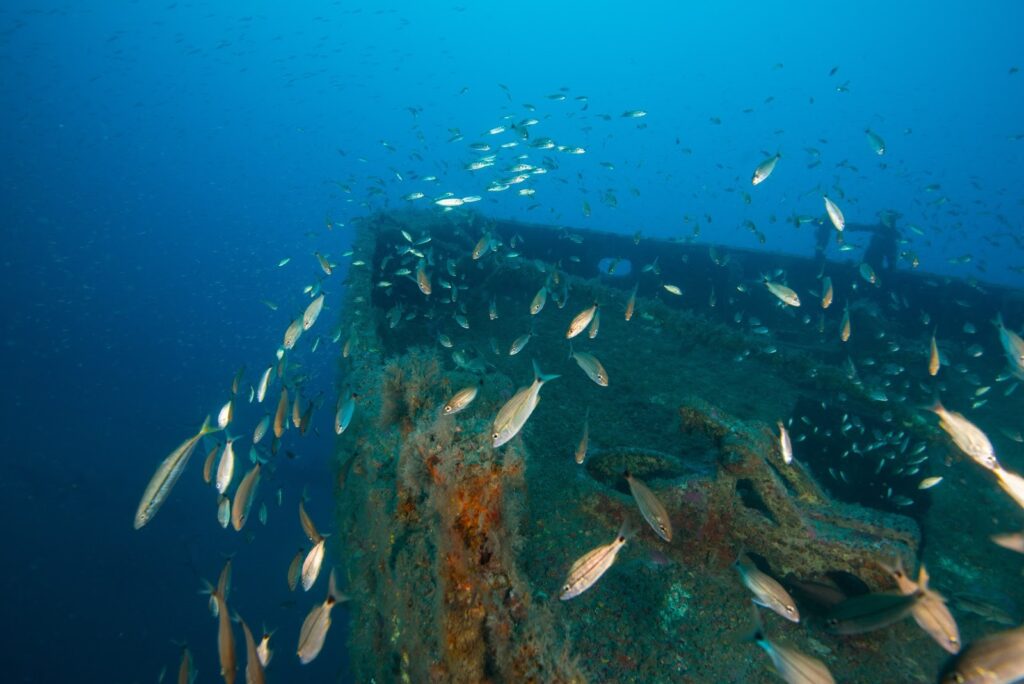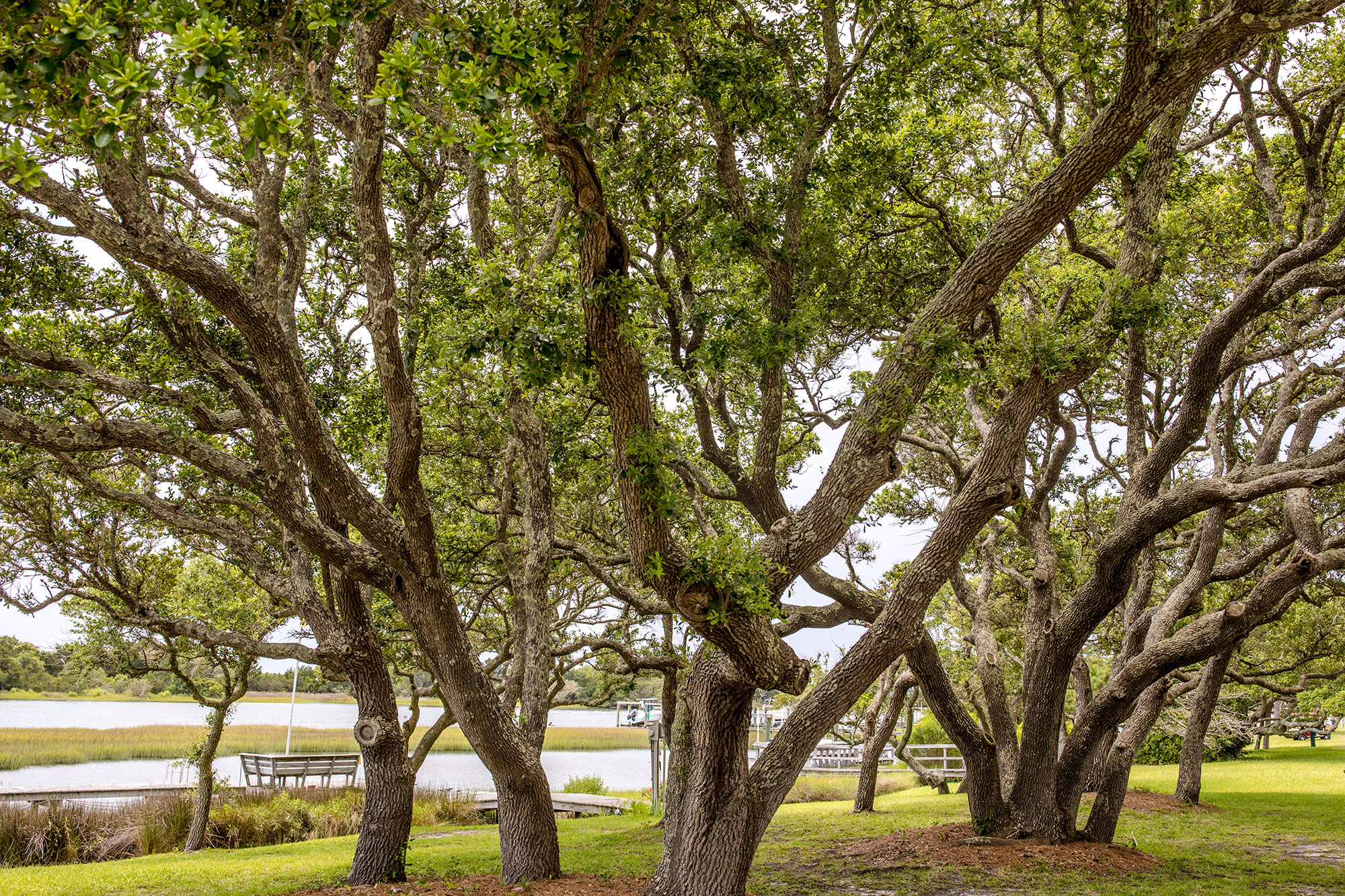Citizen Science Bolsters Oyster Restoration Efforts
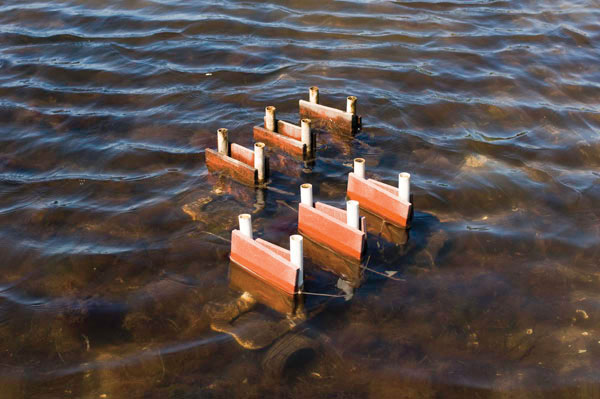
Consider the Eastern oyster, Crassostrea virginica: It’s no beauty queen compared to, say, the elegantly symmetrical sea scallop. Rather, this “no-glam” bivalve is more the Miss Congeniality type — a hardworking native species performing essential ecosystem support services.
For starters, a single oyster’s amazing flow-through system can filter more than 50 gallons of water a day, extracting algae and sediments from the water column for its own nutrition. The irregular nooks and crannies of a healthy oyster reef also create suitable habitat for abundant marine organisms throughout the food chain — from phytoplankton to blue crabs.
And, because oysters are a sought-after delicacy for restaurant and home tables alike, the oyster fishery fills an important niche in coastal economies.
But here’s the rub. Overharvesting, habitat destruction and disease, along with sediment and pollution from runoff, have taken a serious toll on native oyster populations.
Long gone are the storied million-plus-bushel harvests recorded in the early 1900s, according to the North Carolina Division of Marine Fisheries.
The agency lists the oyster as a “species of concern.” But commercial harvests have inched upward from the alarmingly low 34,700-bushel harvest in 1994 to a preliminary count of 196,651 bushels in 2010.
CITIZEN SCIENCE MATTERS
Recent modest yields come after more than a decade of collaborative oyster restoration efforts by federal and state legislators and agencies, university researchers, commercial and recreational fishing interests, environmental organizations, and, in no small measure, by environmentally savvy citizens.
Volunteer-based “citizen science” plays an increasingly important role in a host of the state’s oyster enhancement projects — a point not lost on Troy Alphin, with the University of North Carolina Wilmington’s Benthic Ecology Laboratory, known as BEL.
Alphin taps into a coastwide network of community volunteers to sustain his brainchild: the Statewide Oyster Spat Monitoring Project.
“The project is one of the first efforts to coordinate sampling for oyster larval settlement up and down the North Carolina coast,” says Alphin. “Understanding geographic locations, spawning times, abundance and survival of oyster spat, and environmental conditions will help the state figure out where and when to place shells and other suitable substrate material for reef building.”
Timing is crucial because oyster larvae remain viable in the water column for about two weeks after spawning begins, Alphin says.
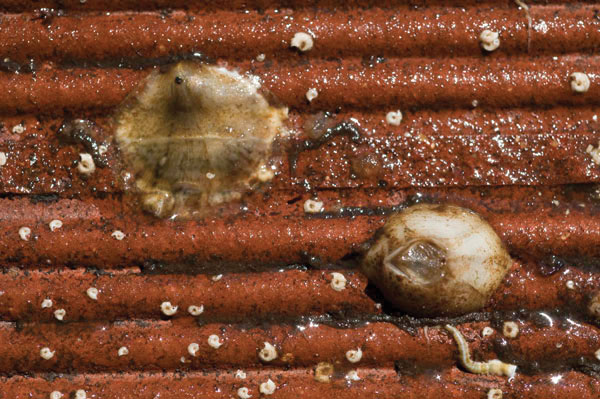
The oyster spat monitoring project received a boost to statewide status through funding from the N.C. Fishery Resource Grant Program administered by North Carolina Sea Grant. Along with Alphin, the project team includes: Martin Posey, UNCW Biology and Marine Biology Department chair, and Henry “Jay” Styron, assistant director of marine operations at UNCW’s Center for Marine Science. Posey and Alphin are co-directors of BEL. Marc Turano, Sea Grant mariculture and blue crab specialist, collaborates with the team to coordinate northern sampling.
From 2007 to 2010, the team and volunteers evaluated oyster spat monitoring protocols for reliable year-round data collection. They also assessed whether they could sustain the volunteer-based program. If numbers are indicative of success, consider this: 152 trained volunteers logged 5,104 hours collecting and reporting data from more than 50 sites from Dare to Brunswick counties. The project data provide an emerging picture of coastwide spat settling trends and variables.
With limited shell resources, the trends are among the factors DMF considers to determine the start and end of shell “planting” season, says Stephen Taylor, DMF southern district shell biologist.
Taylor, who has been involved in various stages of the spat monitoring project, frequently teams with UNCW, Sea Grant, environmental organizations and highly motivated volunteers.
“Volunteers play a very important role in statewide efforts to bring back the oyster. We are working hand-in-hand as part of an overall management process. You can’t put a dollar value on the volunteer contribution,” Taylor notes.
“The reality is that no single agency or university could afford the personnel or the investment of time represented by this volunteer-driven project. Citizen-science involvement is critical to leveraging time and resources,” Posey adds.
MAINTAINING MOMENTUM
An overall thumbs-up assessment supports continuing the project — with some tweaks to the existing protocol and the addition of monitoring sites — to provide long-term baseline oyster settlement data for the entire coast.
Posey is confident that many volunteers will remain involved and recruit others to join in. “People are concerned about getting the coastal environment healthy and want to help. This project gives them the sense of being part of something bigger and more effective than any individual effort.
Communication, networking and support keep volunteers informed and motivated, Turano points out. “Troy Alphin and Sharon Tatem developed a great website and an online newsletter to share news about the project and volunteers. Importantly, Troy and Sharon are always available to the volunteers.”
Tatem is the point person for the project — developing monitoring schedules, managing data, recruiting volunteers, coordinating training, and maintaining the website and newsletter. Once trained, volunteers are given the tools of the trade: the Spattered protocol handbook, hydrometer, thermometer, yellow field notebook, two spat monitoring racks, waterproof identification sheets with color photos of target oyster spat and other benthic species. And Tatem’s phone number and e-mail address.
“The diversity of volunteers is incredible,” Turano says. “They include retirees, students and teachers. What they have in common is a desire to be involved with meaningful community work.”
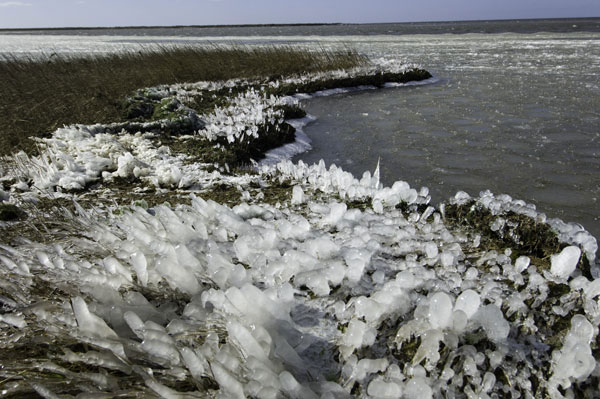
Another common trait: They don’t shy away from getting wet and muddy in any given season.
Participants track oyster larval settlement on a set of six ceramic tiles affixed to plastic pipe racks, which are deployed in estuarine waters between the high- and low-tide lines.
The tiles are considered a good surrogate for oyster shells, which is oyster larvae’s preferred surface to settle upon and grow under natural conditions. In addition, the uniform surface area of the tiles simplifies sampling. Every six weeks, volunteers pull the rack from the water to count and record spat and settled larvae, as well as the presence of benthic organisms.
Twice a week, volunteers record water temperature and salinity, air temperature and weather conditions — especially local rainfall amounts.
“It’s quite a commitment and we want to keep finding ways to energize our volunteers,” Tatem says. “We respect their hard work and want them to know how much we appreciate what they are doing for science. They enter the program at all levels of knowledge. With the experience, they become articulate advocates for the coastal environment.”
ONE THING LEADS TO ANOTHER
For Taylor Ryan, signing on for the UNCW spat monitoring project was an easy decision. When Ryan settled into his St. James home on the Intracoastal Waterway, known as the ICW, he lost no time educating himself about his new surroundings.
He attended a seminar at the N.C. Aquarium at Fort Fisher about oyster restoration efforts in North Carolina. UNCW, North Carolina Sea Grant and the North Carolina Coastal Federation jointly sponsored the event. “I learned about the connection between oysters and water quality. I thought to myself, ‘Here I am living on the ICW that is closed to shellfishing. I should make it my business to do something,'” Ryan recalls.
And he did. He went to the St. James mayor to request funding to purchase 21 cubic yards of oyster shell for an erosion control project at the town’s Waterway Park. He contacted Posey, Alphin and the Coastal Federation’s Ted Wilgis, and arranged for proper DMF permits.
“It was a leap of faith,” Ryan says with a smile. “I sent out an e-mail to St. James residents, told them time and place, and went out to rent a Bobcat. I had no idea that 90 people would show up to get the job done. In two hours, we had the shells bagged using shovels and bare hands. It was one big, happy time.”
Since then, St. James residents have continued to team with UNCW, the Coastal Federation and DMF for ongoing oyster enhancement work.
Another shell-bag erosion control blanket rests on the shoreline in Ryan’s backyard — not too far from the two spat monitoring project racks he manages. “It takes time and precision, but I faithfully count, measure, record and report my observations,” he says.
Ryan knows firsthand that citizen science is valuable. While he and his St. James neighbors are helping with various oyster enhancement projects, Ryan says, “We are learning about the local environment and ecology. Will we ever get the ICW back to being able to eat the oysters we are growing? Probably not. But every little fish that comes to eat with the oysters becomes food for bigger fish.” And that fish may feed a bigger fish, he adds.
It also was newcomer curiosity that drew Wayne and Mary Grossnickle to join the Coastal Federation to learn more about their adopted Sneads Ferry environment. Early on, the New York City transplants also joined a DMF pilot project with the Under Dock Oyster Culture Program. “We got a permit and learned the ropes from fellow members of the group,” Mary Grossnickle recalls.
The water in their Chadwick Bay “backyard” is open to shellfishing nearly all year long, except after heavy rains, they say. What’s more, with naturally occurring oysters in the bay and with a nearby commercial oyster lease, there is no lack of spat swimming their way. “We love the fact that we can walk to the end of the dock, pull up our cages and have dinner available,” says Wayne Grossnickle.
The Grossnickles were among the first to join the UNCW spat monitoring project — a natural next step for their new “all things oysters” lifestyle. The couple participates in Coastal Federation oyster enhancement work at Morris Landing, Jones Island and New River.
They say the spat monitoring project keeps them aware of the ecology and environment of their own “garden.”
“We are always learning and having fun and keeping our eyes open for the next opportunity to do something in behalf of the oysters,” Mary Grossnickle says.
BUSINESS AND PLEASURE
Michael Halminski, an Outer Banks nature photographer, has a keen eye and love for the marine environment. So being part of a citizen science network is a chance for him to mix business and pleasure. His backyard borders the Pamlico Sound and is both studio and laboratory.

He devotes at least two days a week to oyster projects he is conducting with UNCW, Sea Grant and East Carolina University. With Sea Grant, Halminski is working with Turano to test the biodegradability of oyster shell bags made with coconut fiber compared to the plastic mesh bags in widespread use.
Halminski also holds a special DMF permit and collects broodstock for Carteret Community College and the University of North Carolina Coastal Studies Institute. A member of the Under Dock Oyster Culture Program since its start, he believes that as long as there is broodstock, the waters are right for oysters.
The UNCW spat monitoring project might help local oyster farmers make a comeback, he hopes. “Small oyster business folks have it rough. Many do it out of love, but are hardly meeting expenses,” he says.
Halminski, who faithfully tends his two monitoring racks year-round, says winter is a no-show for spat. “In winter, the water is clear as gin, and not a lot is suspended in the water column. Summer is a different story. It is surprising to see the complexity of organisms on the tiles,” he observes.
And, yes, he photographs the unusual finds, such as snapping shrimp and sea worms.
INSPIRING LIFELONG LEARNING
Pat Donovan-Potts, education and outreach coordinator for PenderWatch and Conservancy, was onboard with the UNCW oyster spat monitoring project from the start. She soon became a pied piper, recruiting teacher, student and parent participation from Topsail’s elementary, middle and high schools.
Fortunately, several PenderWatch and Conservancy members own homes on creeks and waterways nearby and offer their outdoor “classrooms” for nature projects.
“Learning doesn’t get any better than this,” Donovan-Potts says. “Teachers know the best learning tool is ‘hands on.’ When students see, touch, explore and examine, the lesson will stay with them. And when the students get excited about learning, so do the teachers.”
Terri Kirby Hathaway, Sea Grant marine education specialist, agrees. “It’s extremely important for students to see how science works. These kinds of experiences make students excited about science and ready to learn. There is no need to fabricate data. They get it — in real time.”
For members of the Topsail High School Ecology Club, the monitoring project has been much more than an extracurricular activity.
“It’s been an education for all of us. We are making a personal connection with the environment and it’s hard not to be changed by what we are doing,” says Lucie Sullivan, who would like to attend UNCW with her eye on marine science.
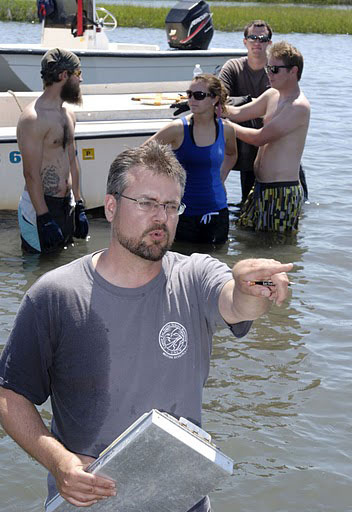
Sam Taylor would like to teach environmental science one day. “I agree with Lucie. I was once just a casual observer. Now, I’m into it because of this hands-on experience with the environment and ecosystems.”
For Daniel Kinney, the experience has reaffirmed his desire to study marine science at UNCW. “It has been especially eye-opening to learn about the life cycle of oysters and observe the trends in the ICW from season to season,” he says.
Ben Shosek, Topsail science teacher and club mentor, notes that most of the club members are college bound and the project provides priceless experience. “It is an opportunity to learn research methods, attention to detail, and data collection.”
Topsail Middle School science teacher Sharon Mooney-Hughes says she and her eighth-grade Science Club have taken part in the project for three years.
“We love it. It’s an opportunity to engage in valid science. We can see how the data they collect are actually being used,” she says. When they pull up the racks, the students find a multitude of critters from sponges to oysters.
“Two of our racks are in the creek in PenderWatch member Jack Spruill’s backyard. He shares much more than his property. He shares his vast knowledge of the natural world around them. He lets the kids use his spotting scope to see the multitude of birds that inhabit the marsh,” Mooney-Hughes adds.
She sums up the teacher-student experience this way: “We love being engaged in the project. It is tedious. We get slimed and it definitely is not glamorous science. Nor is the oyster a glamorous critter. But we are learning that it has a very important job in the ecosystem. And our job is to try to ensure the oyster’s future.”
This article was published in the Spring 2011 issue of Coastwatch.
For contact information and reprint requests, visit ncseagrant.ncsu.edu/coastwatch/contact/.
- Categories:
